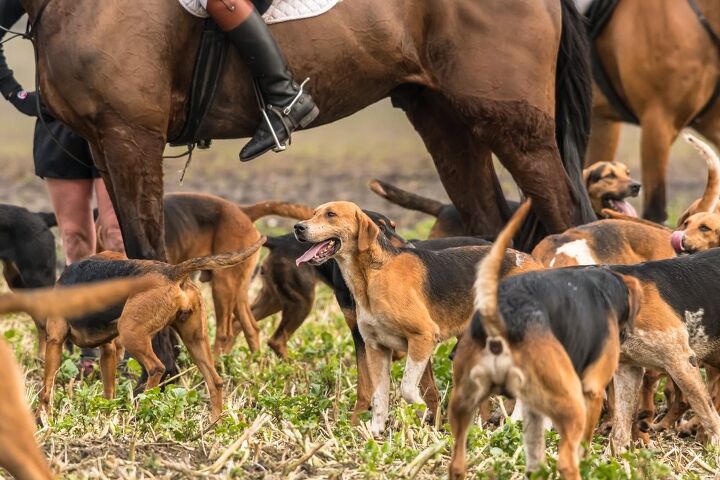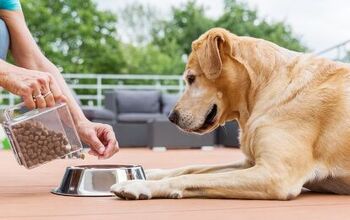Kerry Beagle


About Kerry Beagle
Though the name of this breed might suggest otherwise, the Kerry Beagle isn’t related to the Beagle. The Kerry Beagle has drop ears which are similar to a Beagle’s, but that is where the comparisons stop. This breed is medium-sized with a broad head and a short coat. The most common coloration seen in this breed is black and tan. Other color variations include tan and white, and blue mottled with tan or black. Looking at this breed you can tell that it was built for speed and endurance – these are the qualities that make it such a great hunter.
However, even though this Irish native had its start as a scenthound and is still primarily used for drag hunting and hare hunting, they do make good family pets, as well. They are loyal and obedient, and will happily play with children instead of traipsing through woods, sniffing for birds or small animals. If you have had previous experience with active breeds or working dogs and know how to meet their needs, then the rare Kerry Beagle might be a good choice for you- if you happen to come across one, that is.
Looking at this breed you can tell that it was built for speed and endurance.
One of the oldest Irish hound breeds, the Kerry Beagle is thought to be descendant from the Old Southern Hound or from other Celtic Hounds. The origins of this breed are thought to date all the way back to the 16th century – detailed pedigrees have been found dating back to 1794. The exact origins of the breed are unknown but there are several legends regarding the origins of the Kerry Beagle. One legend states that when Noah’s ark finally came to rest against the highest peak in Tipperary, called Galtymore, two black-and-tan hounds smelled a fox and ran off to pursue it – they were never seen again. Until the 1800s, the population of Kerry Beagle was fairly stable but it began to dwindle and only one major pack remained. This pack, the Scarteen of County Limerick, which belonged to the Ryan family, is still in existence today.
One of the Irish native breeds, the Kerry Beagle might even be older than the ancient Irish Wolfhound. There’s not much known about their origin and ancestors. In the breed’s beginning, they were developed to track stags and other large game. Their exceptional sense of scent and tracking abilities would lead the hunting party to prey, which made them very valuable to their masters.
Today, they are most commonly used to hunt hare and fox– they also take part in drag hunting. This breed was brought to the Americas by Irish immigrants and it is thought to have played a role in the development of the Coonhound.
Majority of experts agree- commercial pet food is the best choice for most dogs. The Kerry Beagle will also do well on high-quality dry food for dogs, but only if you choose kibble that’s a right fit for their needs.
The Kerry Beagle is a medium-sized breed and should be fed a dog food diet formulated for dogs of its size. Also, as this breed is also fairly active so you may want to consider a dog food formulated for active breeds. Lastly, their age should be considered as well, so choose kibble that’s appropriate for a puppy, adult, or senior dog. Doing so will help to ensure that your dog’s energy needs are met.
When it comes to how much food to pour in their bowl, you should follow the recommendations printed out on the kibble bag. These are not overly large dogs and will not need much food to meet their needs. In fact, you shouldn’t overfeed or free feed them, either. Unless they get to burn off a lot of that kibble in dog sports, regular hunting and exercise, they can gain extra weight. And excess weight is the last thing these sporty dogs need- it will put stress on their joints and potentially cause other health issues.
The Kerry Beagle is an intelligent breed developed for scenting and hunting.
The Kerry Beagle is an intelligent breed developed for scenting and hunting. This being the case, it should respond well to training as long as you use positive reinforcement-based training methods. Even if you do not train this dog for hunting it will appreciate having a job to do, so consider training it for some kind of dog sport such as obedience or agility. As is true with all dogs, puppies should be started with training and socialization as soon as possible to prevent the development of problem behaviors.
The Kerry Beagle stands between 22 and 24 inches tall and weighs an average of 50 to 60 lbs.
The Kerry Beagle is friendly and good-natured – it is known for having an even temperament and for getting along with all people, even children. They are patient, obedient, and loyal, and when socialized on time, they’ll enjoy playing with kids and won’t mind energetic children around them. In general, there’s very little these laid-back dogs do mind!
This breed also tends to get along well with other dogs, as in their original hunting days they sniffed in packs. The Kerry Beagle is actually known as a breed that loves having canine companions, and they’ll never be aggressive towards other dogs, especially with timely socialization. However, small pets may be a problem unless you introduce them at a young age. They have a high prey drive and will likely be very interested in chasing after cats or rabbits if given the chance. For the most part, though, this breed makes a good family pet.
For the most part, the Kerry Beagle is a healthy breed, not prone to many significant health problems. Like all dogs, however, the Kerry Beagle may be affected by certain minor health problems. Purchasing your dog from a reputable breeder will help to reduce the incidence of congenital conditions because most reputable breeders perform genetic tests on their breeding stock to reduce hereditary health problems.
The average lifespan for the Kerry Beagle is about 10 to 14 years.
As a hunting breed, the Kerry Beagle has fairly high needs for daily exercise. This dog needs a long daily walk and it would also benefit from some active playtime of free time running around in a fenced yard. On average, this breed requires 60 to 90 minutes of activity each day. As a result, they’re not the best choice for apartment living- unless their owner is particularly active and has time to exercise with the dog.
Ideally, as a pet, the Kerry Beagle would live with his family on a farm or at least a home with a big yard. Activity and space where they could safely sniff about and run around are very important for these canines. Without proper exercise, this breed is prone to developing problem behaviors.
The Kerry Beagle is friendly and good-natured, known for having an even temperament.
The Kerry Beagle is not currently recognized by the AKC. It was only recognized by the Irish Kennel Club in 1991.
The Kerry Beagle has a short, smooth coat that lies close to the body. The most common coat colors for this breed are black and tan, though other colors may include white, blue mottled, solid black, or tricolor. For the most part, this breed does not require much grooming aside from occasional brushing to keep its coat in good condition.
The Kerry Beagle breed is very rare, especially outside of Ireland. However, there are still those who are adamant about preserving this ancient hunting hound- so you might be able to find puppies for sale if you get lucky. Kerry Beagle litters vary, with 3 to 8 puppies being the average.
As is true with most dogs, Kerry Beagle puppies should be started with training and socialization as soon as possible. This will help to curb the development of problem behaviors. Kerry Beagle have a fairly high prey drive so, if you intend to keep them with cats or other small pets, you should introduce them at a young age if possible.
Photo credit: Henk Osinga Photography/Shutterstock

Kate Barrington is the loving owner of two cats (Bagel and Munchkin) and a noisy herd of guinea pigs. Having grown up with golden retrievers, Kate has a great deal of experience with dogs but labels herself a lover of all pets. Having received a Bachelor's degree in English, Kate has combined her love for pets and her passion for writing to create her own freelance writing business, specializing in the pet niche.
More by Kate Barrington























